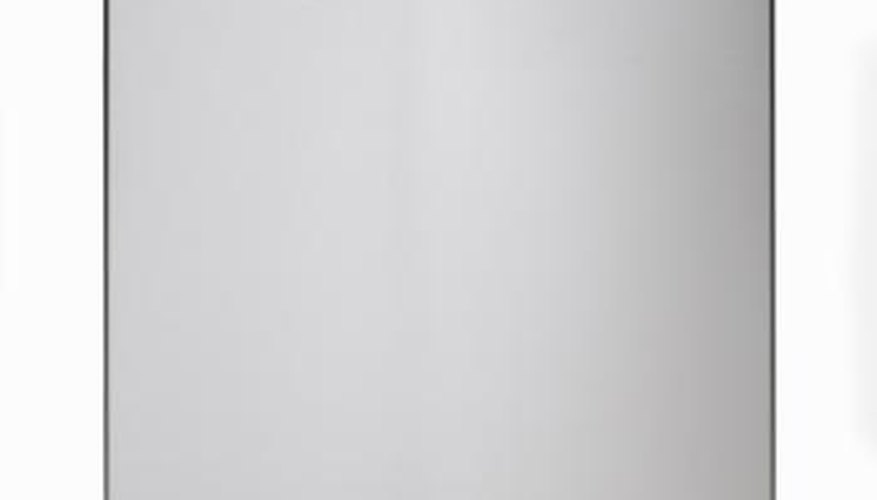Dishwashers are commonplace in today's modern homes. As with many appliances, the high number of moving parts leaves dishwashers vulnerable to breaking down. Problems with the corrugated dishwasher hose are very common. These issues range from simple clogs to leaks. In general, a problem with the hose is the easiest problem to repair yourself. With a few simple troubleshooting tips and common tools, you can fix the dishwasher in less than an hour in most cases.
Check the interior drain. Open the dishwasher and remove any food or other debris from the drain. Debris in the drain may indicate debris in the drain hose. The hose must be clear of any debris to work properly. A dishwasher that does not drain properly may be indicative of a clogged drain or drain hose.
- Dishwashers are commonplace in today's modern homes.
- A dishwasher that does not drain properly may be indicative of a clogged drain or drain hose.
Remove the service panel to visually inspect the drain hose. Unplug the dishwasher from the wall. Close the dishwasher door. Remove the screws or Torx screws that hold the service panel in place. The number of screws will vary, depending on your dishwasher model. In general, there are two screws located directly beneath the dishwasher door and two more screws attached to the kick panel. Some models may require you to unscrew additional screws on the interior side of the door panel as well.
- Remove the service panel to visually inspect the drain hose.
Check the drain hose for leaks. Many hoses develop leaks at the section where the tube bends. If the hose is cracked, it must be replaced. Continue to the next step even if no cracks are present.
- Check the drain hose for leaks.
Remove the hose from the dishwasher. An undamaged drain hose must still be removed to verify that any clogs are completely flushed out. Use a pair of pliers to crimp the wire clamp that holds the hose in place. Slide the wire clamp away from the drain housing. Remove the hose from the dishwasher.
Remove the hose from the sink line. The corrugated drain hose from the dishwasher is also attached to the sink drainage line for most models. Use the pliers to remove the wire clamp in the same way that you removed the clamp holding the hose to the dishwasher drain housing.
Check the hose for debris and other materials. Run water through the hose to clear any debris. Pour water into the hose and hold it in a "U" shape to see if it has any leaks. Replace the hose with a new one if leaks are present.
- Remove the hose from the sink line.
- Replace the hose with a new one if leaks are present.
Attach the corrugated drain hose to the dishwasher. Use a new hose or the unclogged old hose. For installation, reverse the process you used to remove the hose. Verify that the wire clamps are snug over their respective fittings. Plug in the unit and run a short wash cycle before putting on the panels. If the dishwasher drains properly and no leaks are present, screw the panels in place to complete the repair. If the hose leaks, check the fittings and run the wash cycle again. If the leak is still present and you used the original hose, replace it with a new one.
- Attach the corrugated drain hose to the dishwasher.
- If the hose leaks, check the fittings and run the wash cycle again.
